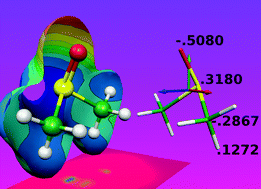Deriving atomic charges and building a force field library for a new molecule are key steps when developing a force field required for conducting structural and energy-based analysis using molecular mechanics. Derivation of popular RESP charges for a set of residues is a complex and error prone procedure because it depends on numerous input parameters. To overcome these problems, the R.E.D. Tools (RESP and ESP charge Derive, http://q4md-forcefieldtools.org/RED/) have been developed to perform charge derivation in an automatic and straightforward way. The R.E.D. program handles chemical elements up to bromine in the periodic table. It interfaces different quantum mechanical programs employed for geometry optimization and computing molecular electrostatic potential(s), and performs charge fitting using the RESP program. By defining tight optimization criteria and by controlling the molecular orientation of each optimized geometry, charge values are reproduced at any computer platform with an accuracy of 0.0001 e. The charges can be fitted using multiple conformations, making them suitable for molecular dynamics simulations. R.E.D. allows also for defining charge constraints during multiple molecule charge fitting, which are used to derive charges for molecular fragments. Finally, R.E.D. incorporates charges into a force field library, readily usable in molecular dynamics computer packages. For complex cases, such as a set of homologous molecules belonging to a common family, an entire force field topology database is generated. Currently, the atomic charges and force field libraries have been developed for more than fifty model systems and stored in the RESP ESP charge DDataBase. Selected results related to non-polarizable charge models are presented and discussed.

You have access to this article
 Please wait while we load your content...
Something went wrong. Try again?
Please wait while we load your content...
Something went wrong. Try again?


 Please wait while we load your content...
Please wait while we load your content...